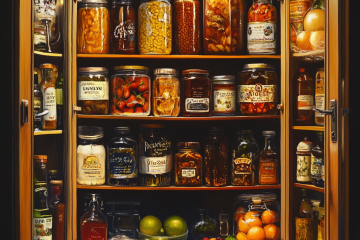
More than 30% of adolescents in the U.S. have an anxiety disorder
Let’s get real. When your life is plagued by anxiety, progressing towards a more self-sufficient lifestyle is anything but easy. But, is it possible. Yes! If you do it the Preparedness Pro way which is panic-free, peaceful, preparedness.
Let’s first talk about the prevalence of anxiety.
Anxiety is a prevalent mental health issue affecting a significant portion of the population. Globally, about 4% of people experience an anxiety disorder at any given time. [Source] In the United States though the numbers are significantly worse. Approximately 19% of adults have an anxiety disorder,[Source] and nearly 31.9% of adolescents experience anxiety disorders today.[Source] The prevalence is notably higher among women compared to men.[Source]
This means that something as benign as having a set dinner routine thrown off course could trigger someone with anxiety, and certainly something as significant as a financial collapse will make their life practically unbearable. So, if you or those you love are dealing with this disorder, it’s important to take that into account in your preparedness efforts.
First, let’s understand what triggers anxiety that’s relevant to our conversation here. You see, not having a solution or a strong response is one of the key triggers for a person who deals with anxiety. They feel out of control and that triggers their anxiety big time. They immediately go from sunshine to worst case scenario. So, with practice and showing them that you have sound solutions, you can soften or even eliminate those triggers and instead turn the person into an asset instead of a vulnerability in a time of crisis.
Taking that into consideration, here are some of my suggestions for assisting those who deal with anxiety to progress towards a more self-sufficient lifestyle.
- Talk about it frequently as if it’s just another everyday possible occurrence and more importantly, what the solution is, and that you’re ready for it, should something happen. For example, if dinner routine gets thrown off, no problem, just go to the pantry and grab a jar of Coq au Vin, warm that up in the microwave along with some instant mashed potatoes and you’ve got a 4-star meal. (4-star because of the instant mashed potatoes, of course). In other words, make the detours normal.
-

Regular calm meditation or prayer are ideal ways to manage anxiety
Conduct run-throughs for just-in-case scenarios so that should they happen you/they don’t shut down. It’s vital for the person dealing with anxiety to know that there’s a firm solution. They already know the answers and know that there’s a plan and a positive outcome. Knowledge is empowering and can make anxiety feel more manageable.
- Get them involved in the preparation for the solutions such as canning with you, putting the bug-out-bags together, figuring out the meet-up point, etc. That way they know that the foundation underneath them, aka the solutions are firm and familiar.
- Apply the current events of the day to potential “what if” scenarios in a non-panic approach. For example, say there’s a thunderstorm warning. Ask, “What do we do if the power goes out for a few hours or a few days even?” Have them share the rehearsed answers and solutions with you. (Stay informed about current events through reliable sources but avoid excessive exposure to distressing news.)
- Get them involved in the solutions. Give them potential scenarios based on real life and have them come up with the solutions and also share with you where there may be gaps in their knowledge such as how to change a tire on the side of the road or how to respond to a bully.
- Proactively practice mindfulness and meditation or prayer. Regular practice of mindfulness and meditation can help everyone stay present and reduce anxiety. Apps like Headspace or Calm can guide you through these practices. Breathing Exercises are a great option as well. Techniques such as deep breathing or the 4-7-8 method can help calm your nervous system. (Inhale for the count of 4, hold for the count of 7, and exhale for the count of 8) This helps calm the nervous system, improves sleep, lowers heart rate and decreases blood pressure and improve concentration and focus.
-

Help those with anxiety take on the leadership in creating solutions for scenarios
Lastly, approach the self-sufficiency journey in the proper order, through the 10 Principles of Preparedness. They are in a specific order for a reason. They make sense out of potential chaos and are perfect for the beginner and seasoned pro alike.
I believe that with awareness and some pointed strategies, we all can live more peace filled, prepared lives.


